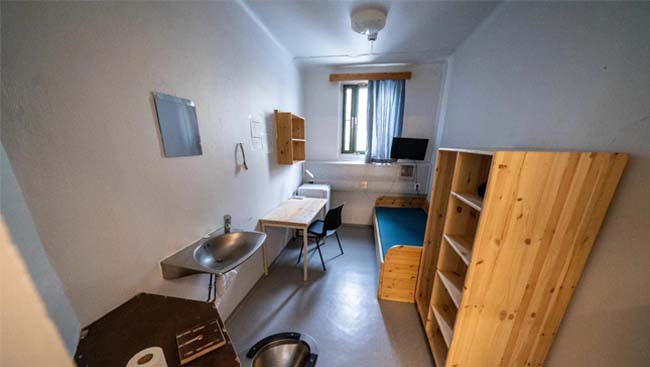Norway has become the best model prison system in the world in that it focuses on rehabilitation and reintegration into society. By overhauling the prison system into a safe and peaceful environment—not a place of punishment—Norway has succeeded in reducing the number of recidivists to a much lower level than the previous prison system.
Success cannot be separated from economic factors. Reportedly, the Norwegian government has dared to disburse three times as much (from funds previously paid) to finance prisons. It aims to provide adequate facilities so that Norwegian prisoners do not feel they have lost their humanity and dignity.

Okay, here’s everything you need to know about the funds the Norwegian government spends on prisons!
How Much Does Norway Spend on Prison Per Year?
As of 2023, Norway currently spends approximately $127,671 per year per inmate in its prison system. Of course, it is not cheap if we compare it to an average of $31,000 in the United States. As we can see now, it is actually effective for Norway to focus on rehabilitation in prisons, not places of punishment.
Well, spending levels that are four times higher than US prison costs are allocated to provide newer and more modern facilities in prison. The provision of these facilities, such as remedial classes and better accommodation, aims to teach convicts how they should ideally live in society after they are released.
Some interesting things you need to know: Norway is not increasing spending on security, police, or the military; instead, they are increasing spending for better accommodation in prisons. It actually focuses on building prisons that are more pleasant and inclusive, as well as changing prison culture to a more humane system.
Norway considers that freedom is the only right that is taken from every prisoner, but that does not mean that they lose other rights such as civil and political rights. Thus, the loss of the right to freedom is sufficient punishment for every prisoner.
However, Norwegian prisoners have the right to be treated like any other citizen, with limitations. Sure, they also have the right to vote and the opportunity to obtain skills that will enable them to continue life after being imprisoned, such as academic education, mechanical skills, cooking, and many more.
Why Did Norway Manage to Reduce Rates of Recidivism and New Crimes?
Basically, Norway doesn’t use prisons as a punishment and doesn’t extend prison sentences. It is very intentional due to the Norwegian philosophy that attempts to treat prisoners as human beings even while they are incarcerated. From an outsider’s perspective, this seems to be rooted in affection rather than contempt.
They believe this approach will make it easier for prisoners to re-enter society. When they are in society, they will feel valued like other citizens, and they come out of prison with self-esteem, new skills, and high self-confidence so that they can become contributing members of society.
When it comes to the prison’s population, Norway has a number of prisoners comparable to 75 per 100,000 inhabitants. If we compare, the United States is at 707/100,000 and France is at 114/100,000. With recidivism rates dropping by 50% since the 1990s, from 70% to 20% today, Norway’s smaller population of 5.3 million is not the only reason for its success.
The important thing you need to know is that the rehabilitative aspect of Norway’s prisons is credited as a major factor in the low recidivism rate. As a place of rehabilitation, prisons allow prisoners and their relatives to stay connected. For this reason, the incarcerated individuals must be geographically close to their homes so they can maintain relationships with their partners, family, and friends.
Reportedly, most of Norway’s prisons allow prisoners to receive visitors up to three times a week. Conjugal visits are also allowed in many prisons. However, a strong emphasis on relationships will provide incarcerated individuals with a strong support system after their release.
Last but not least, the reduced rate of recidivism and new crimes is also supported by the role of prison officers. In fact, Norwegian prison officers are trained for 2 to 3 years before being sent to work in prisons, with an emphasis on reducing violence and building relationships with inmates. It is different from the United States, where they train prison officers for only weeks or even months.
In Norway’s prisons, the officers are encouraged to take part in activities with prisoners. It is no wonder that the prison guards participate in activities like yoga and fitness right alongside the prisoners. The officers also help prisoners get to know them better. Before anything bad can happen, they do their best to peacefully defuse the situation that has the potential to lead to violence among prisoners. Of course, it dramatically helped change the prison culture and also helped the officers lead better lives with better relationships with inmates and their families and friends as well.

A bookworm and researcher especially related to law and citizenship education. I spend time every day in front of the internet and the campus library.




